Think Cloudflare Always Speeds You Up? Not in India
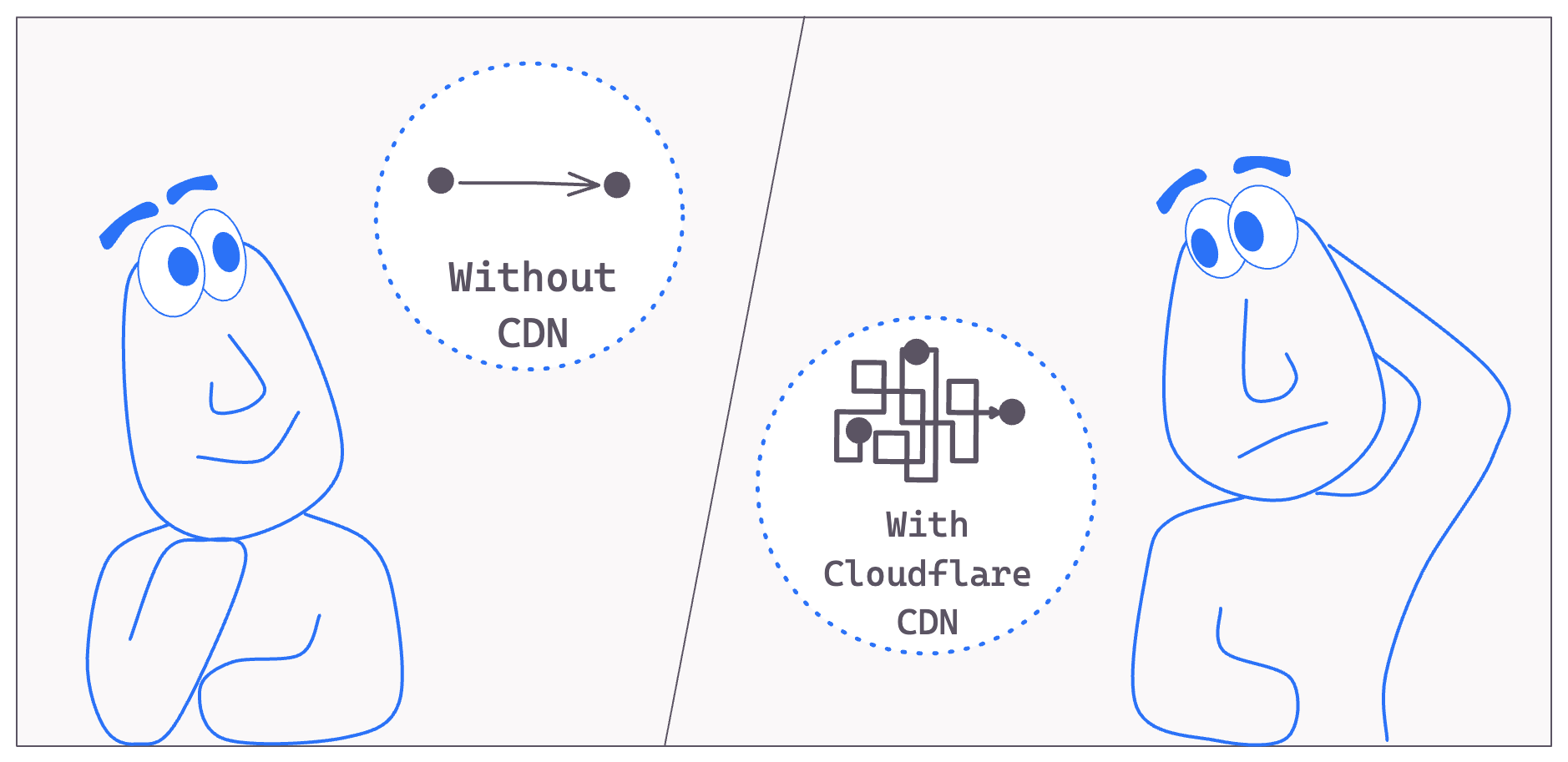
- 1. The initial issue I observed
- 2. Initial experiments: measuring latency
- 2.1. Baseline - no CDN
- 2.2. Cloudflare Free plan
- 2.3. Cloudflare Pro plan
- 2.4. Cloudflare Pro plan with Argo routing
- 3. More checks: decoding Cloudflare routing
- 4. Why is Cloudflare routing this way?
- 5. Extensive Cloudflare latency test results
- 6. Interpreting the results
- 7. How other CDNs compare
- 8. What website owners should do
We commonly assume that putting our site behind Cloudflare makes it faster. But, when I setup one of my sites on Cloudflare, I experienced the opposite. I then decided to run a bunch of systematic tests to decipher the behavior.
This post walks through the experiments I ran on my website using Cloudflare Free, Pro, Pro + Argo plans. I also share the tests performed with a bunch of Cloudflare Business and Enterprise websites and what it means if your audience is primarily visitors from India.
1. The initial issue I observed
One of my websites (hosted on a DigitalOcean droplet in Bangalore, India) had been live for a few months before I moved it to Cloudflare.
On running a cursory latency check (via my Jio fiber internet connection in another city about ~1500 Km away from the origin), I observed the following:
The latency increased from about 47 msec to 159 msec on moving Cloudflare. This happened also for static (JS, CSS, image files) that were expected to be cached on Cloudflare CDN.
2. Initial experiments: measuring latency
Seeing the unexpected latency increase, I decided to run a bunch of checks twice a day for 3-days to account for anomalies arising out of internet traffic fluctuations.
2.1. Baseline - no CDN
I went back to the no-Cloudflare setup to find the latency to my origin server with no CDN in place.
I could see the IP address of my DigitalOcean droplet serving this website:
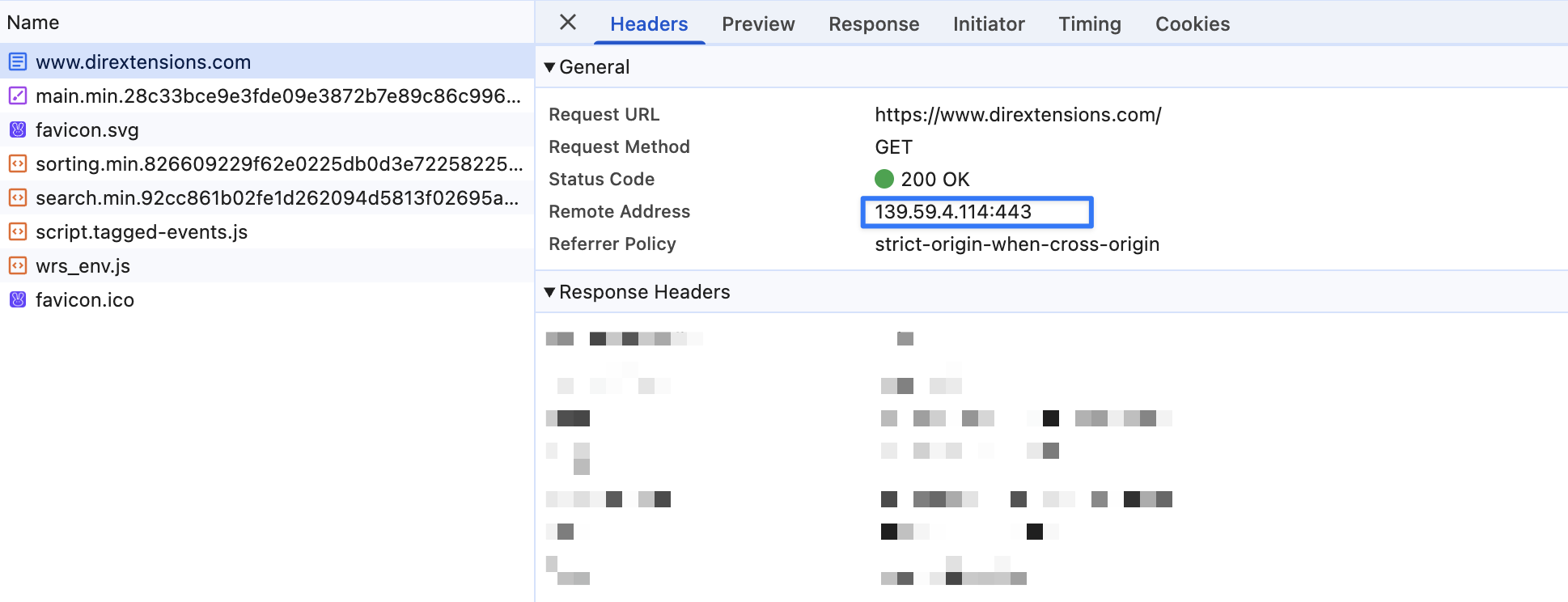
And, I pinged this IP address from my laptop to grab the latency:
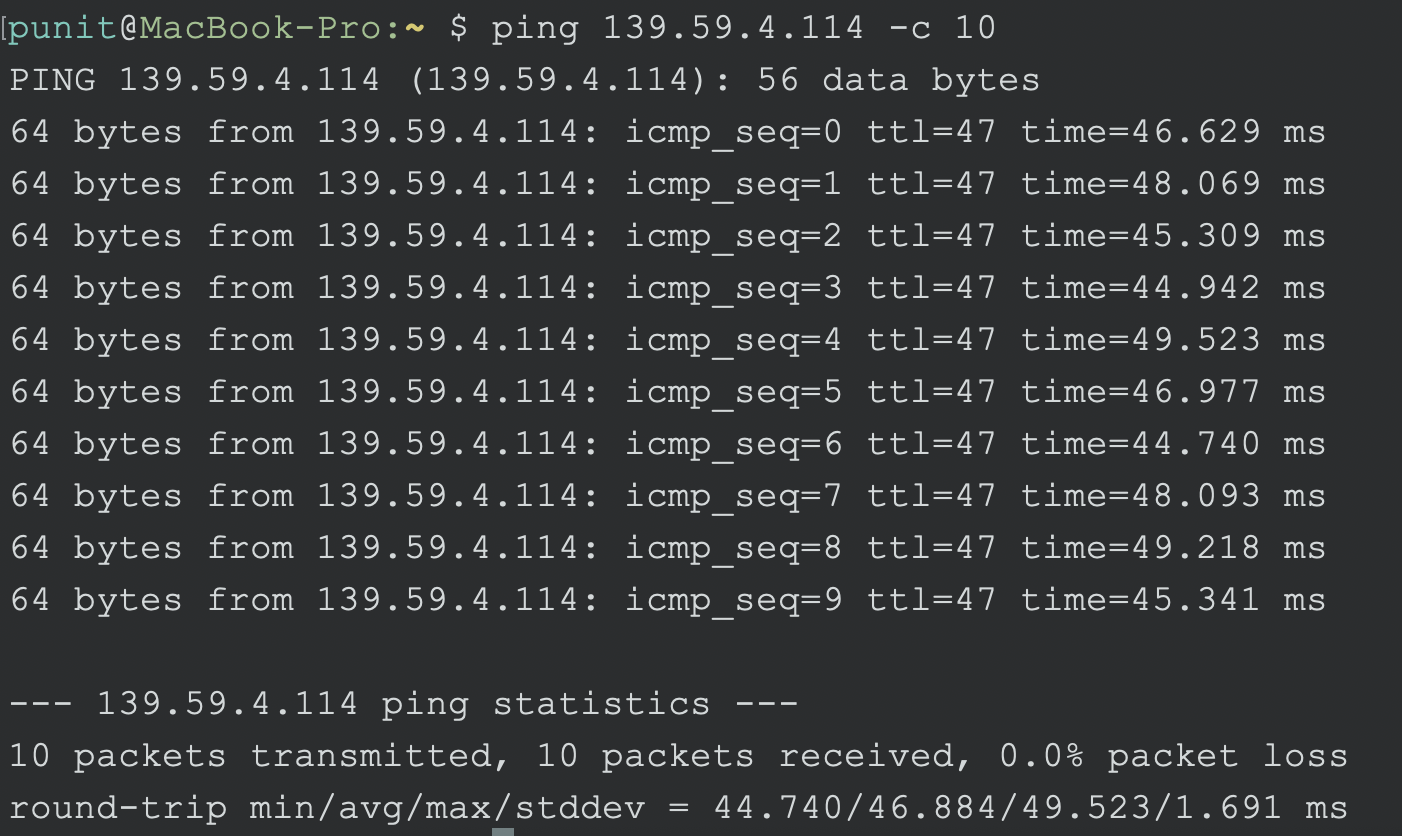
From the above:
- It took an average ~47 msec for a request to reach the server and for the reply to return (RTT latency).
- The latency fluctuation was minimal.
2.2. Cloudflare Free plan
I moved my website to the Cloudflare free plan and repeated the steps to compare the latency.
With the change in my setup, the “Remote Address” IP address changed to a Cloudflare IP address:
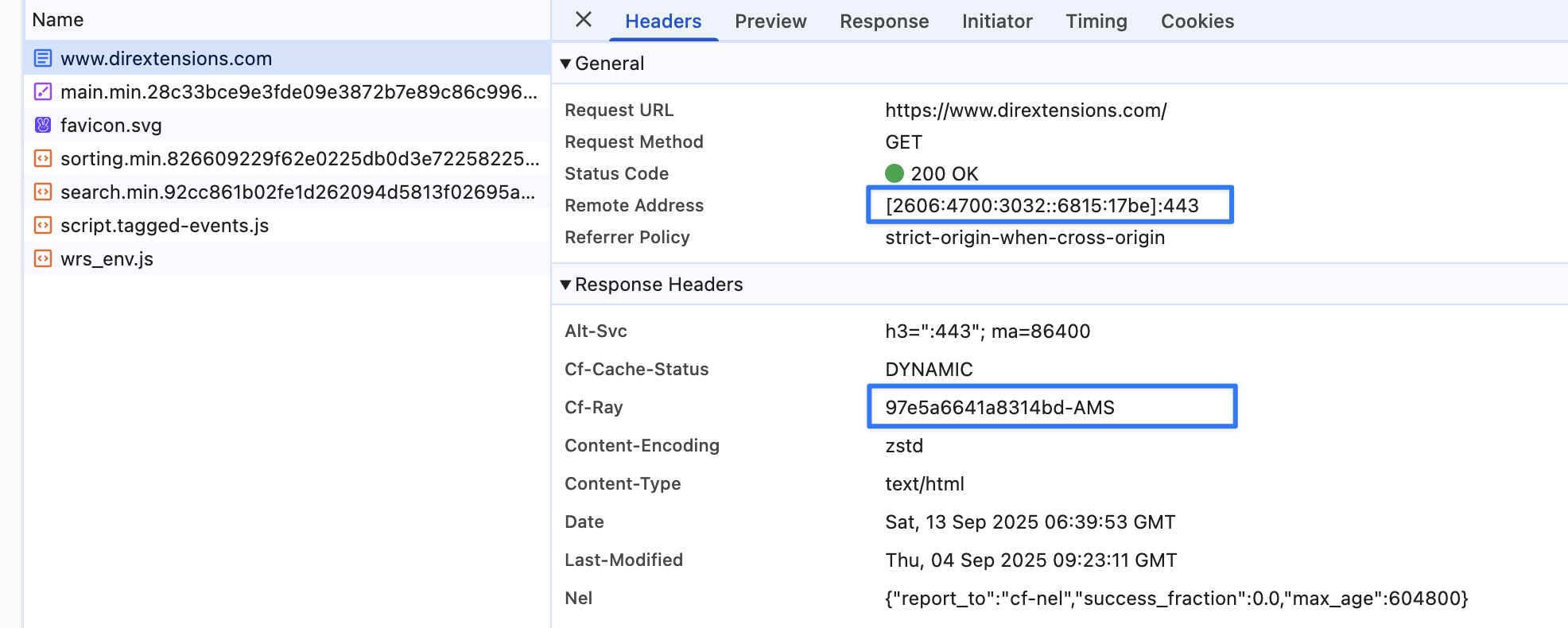
Before we talk about the latency from this Cloudflare IP address, I want to highlight the Cf-Ray header in the response above. Cloudflare docs specify that Cf-Ray contains the location of the data center that served my request. So, this request originating from India, with an origin server in India was served from a data center AMS (Amsterdam).
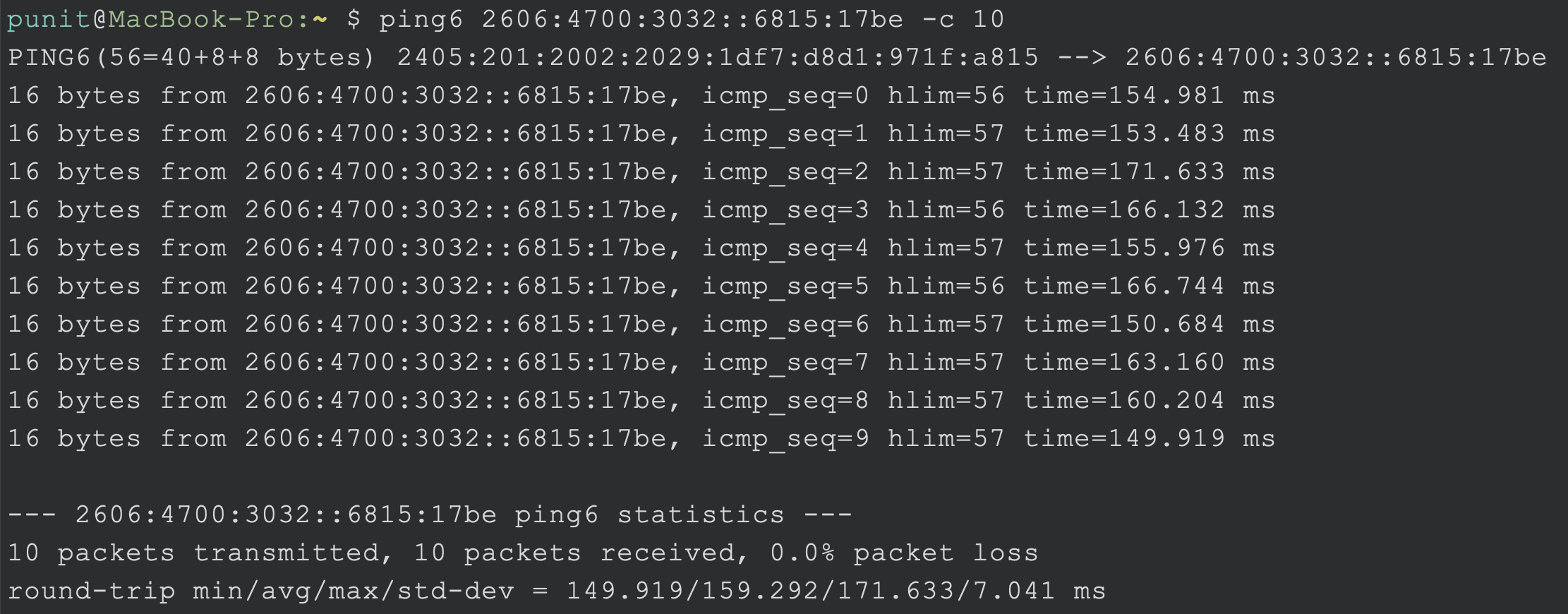
Based on the above details:
- The RTT latency between me and the Cloudflare instance that served my request was ~159 msec.
- At 4% standard deviation, the latency fluctuation was similar to that observed on the baseline (no CDN).
Overall, the above test suggested that I had added a ~112 msec RTT latency by bringing in Cloudflare CDN!
My next question was whether this issue was specific to Cloudflare free plan or if it also affected the paid plans?
2.3. Cloudflare Pro plan
I upgraded to the Pro plan ($20/mo when billed annually) and then waited for about an hour before repeating the test to see if I would observe a difference in behavior.
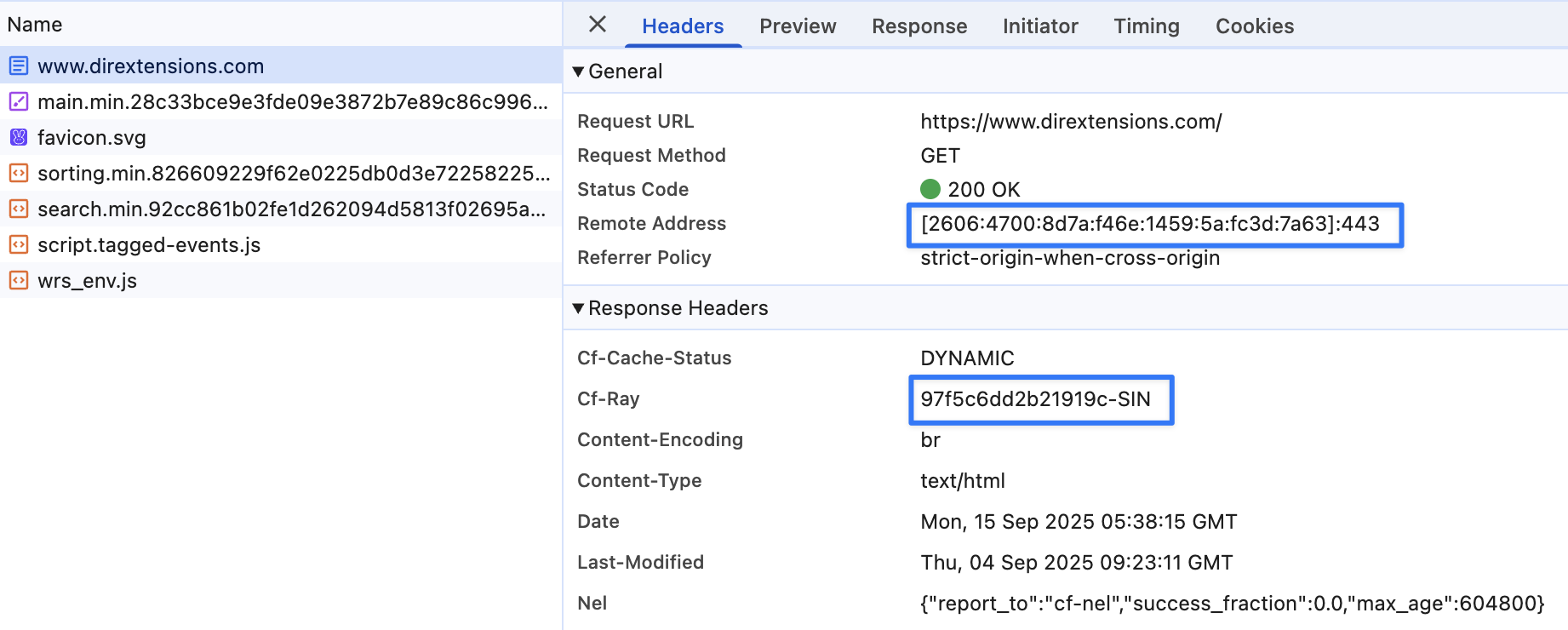
I could now see the Cloudflare Cf-Ray header responding with a value that ends with SIN. This means, my requests were now being served from their Singapore data center. This was still not optimal since I know Cloudflare’s network page lists twenty data centers / edge locations in India including two located within 500 km (~300 miles) from where I ran these experiments.
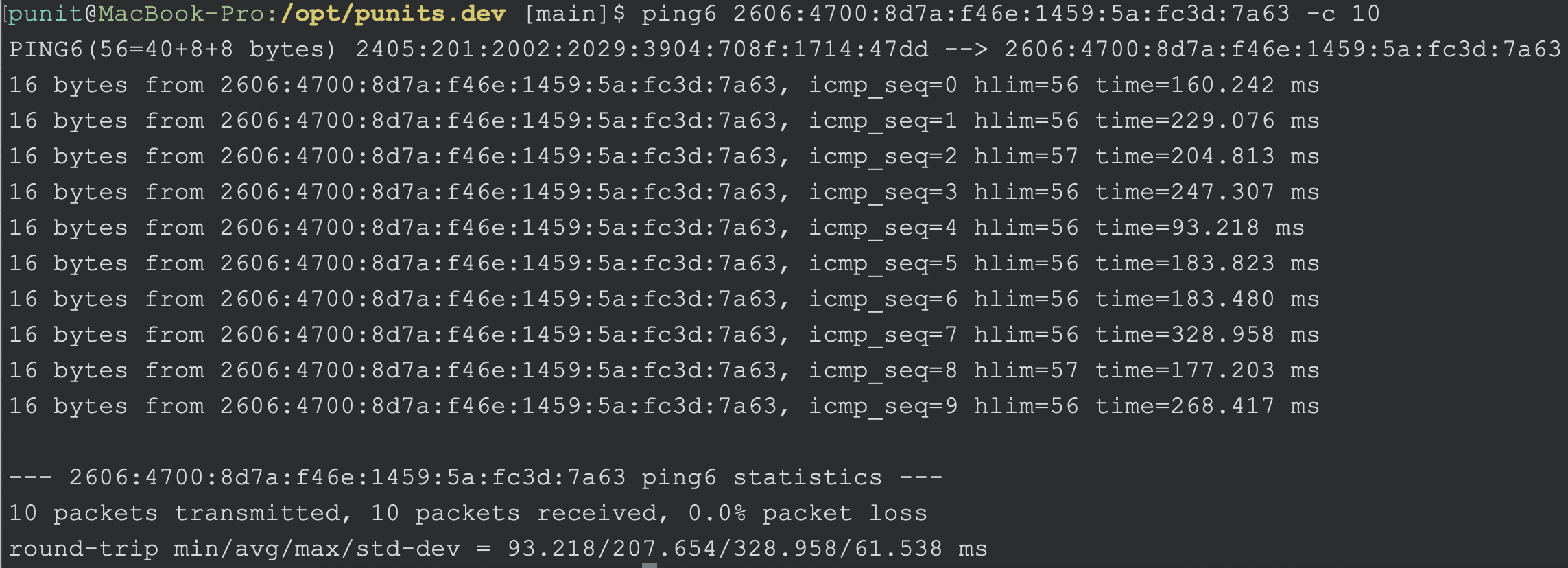
The tests on the Cloudflare pro plan gave the following results:
- The RTT latency between me and the Cloudflare edge instance was ~207 msec.
- At 29% standard deviation, this test run showed significantly fluctuating latency.
2.4. Cloudflare Pro plan with Argo routing
I added the Argo smart routing (priced at $5 for first GB, then $0.10 per GB extra) to my Pro plan to check if this would change how my requests originating from India would be served.
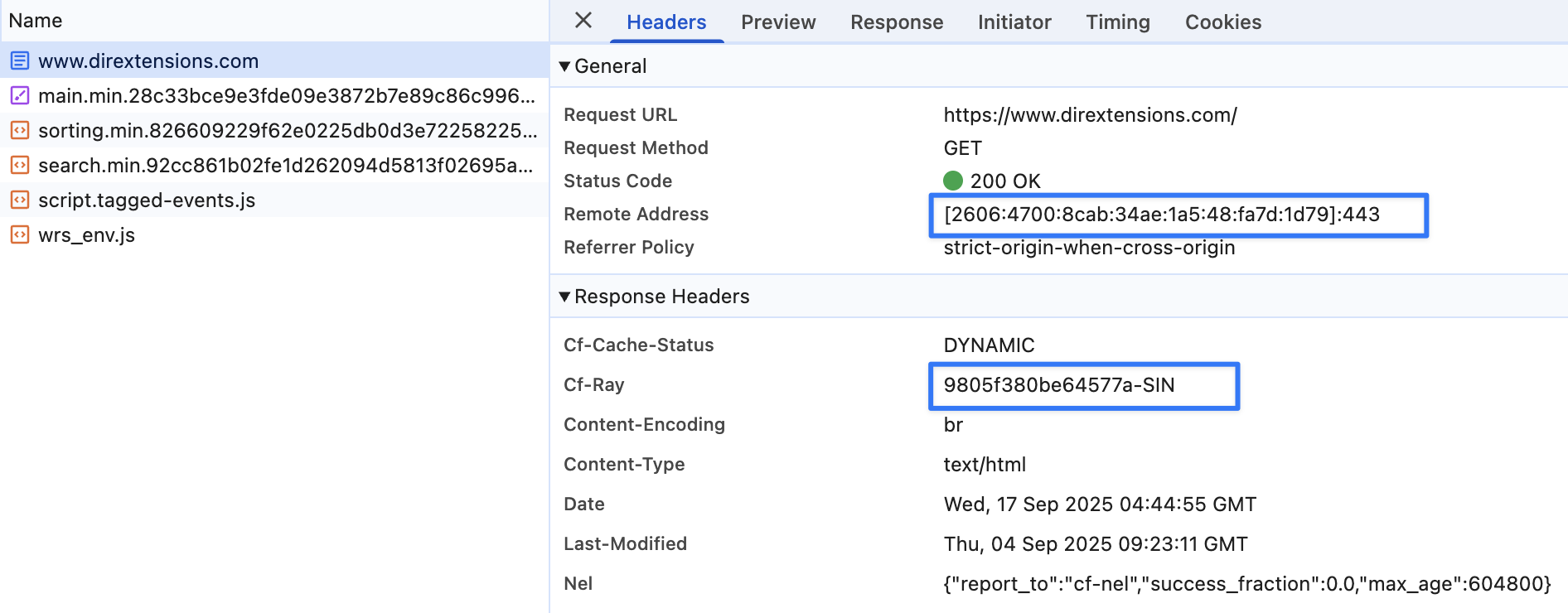
The Cf-Ray response header continued to state that my requests were being served from the Singapore data center.
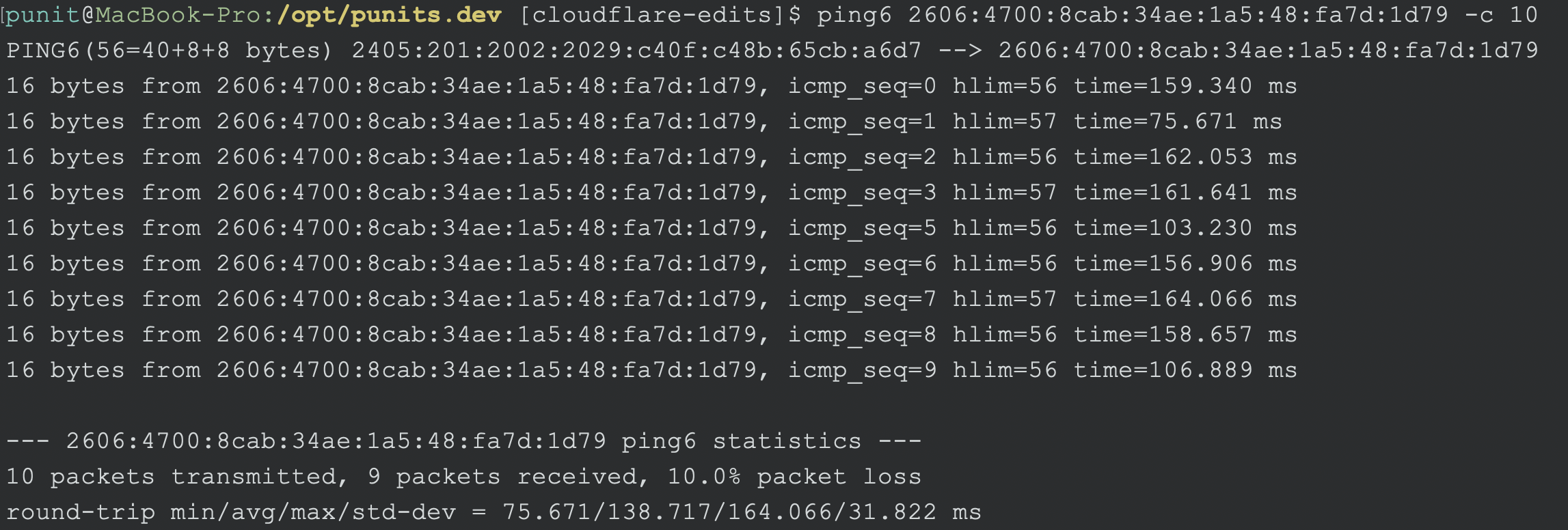
The latency check yielded some improvement:
- The RTT latency between me and the Cloudflare edge instance was ~138 msec.
- At 23% standard deviation, the latency values had substantial fluctuations.
It appeared that Argo routing improved my average latency (I tested this multiple times) but not the latency fluctuations.
3. More checks: decoding Cloudflare routing
With the latency checks so far resulting in higher than expected latency numbers, I tried to understand Cloudflare CDN routing better.
3.1. Cloudflare routing for other Indian ISPs
I ran additional checks to see which Cloudflare data center would serve requests when accessing my site from other ISPs.
This suggested that the Cloudflare routing quirk existed on other Indian networks too, but not on every Indian network.
3.2. Routing for other sites on Cloudflare
I then ran latency checks from my location for 15 distinct websites on various Cloudflare plans:
The checks above suggested that Cloudflare’s routing quirk doesn’t happen for every website on Cloudflare. It seems to exist for websites on Cloudflare Free and Pro plan.
4. Why is Cloudflare routing this way?
At this point, there were two potential reasons for the observed Cloudflare routing behavior:
4.1. Rerouting for capacity reasons
Cloudflare acknowledges that they reroute traffic depending on the capacity consumption of their various data centers. To validate if this was the cause, I needed to run my checks across multiple days or weeks.
4.2. Lack of peering with certain ISPs
Before we get into the details, here’s a bit on peering:
What’s peering
Peering is when two networks (say, an ISP and a CDN) agree to directly exchange traffic between them. In the absence of such agreements, the traffic has to be routed through multiple intermediary networks.
In this case, the absence of peering between my ISP and Cloudflare could cause the traffic to be routed via Singapore or Amsterdam.
Peering agreements between Indian ISPs and Cloudflare
I could not find a definitive list of ISPs that do not have a peering agreement with Cloudflare. But, forum discussions like this, this and this suggest that the two biggest Indian ISPs - Jio and Airtel - may not have a peering agreement with Cloudflare. Collectively, these two ISPs command over 75% Indian mobile network market share (as of Jan, 2025).
Is lack of peering causing Cloudflare to route traffic from distant data centers?
There’s a good chance that Cloudflare’s peering agreement terms are causing Cloudflare to serve some websites from distant data centers. But, this doesn’t seem to apply to all Cloudflare websites. It appears that the websites on business or enterprise plans are excluded from this behavior.
5. Extensive Cloudflare latency test results
With all the information so far, I created an automated latency test suite and ran it at 30 minute interval during my daytime for two weeks (10 working days). Below are the results from 150 latency checks that ran from my office (in India) via Jio fiber connection:
(Origin server @DigitalOcean, BLR)
(Origin server @DigitalOcean, BLR)
6. Interpreting the results
Here’s what I deduced from the various tests:
- Traffic from some Indian ISPs and mobile networks to Cloudflare Free and Pro sites gets served from Singapore / Amsterdam resulting in an increase in latency.
- The Indian ISPs / mobile networks where this applies command over 75% market share.
- Websites on Cloudflare Business and Enterprise plans do not suffer from this re-routing or latency increase behavior.
7. How other CDNs compare
I conducted the same latency checks with other sites on the following CDNs:
- AWS Cloudfront
- Google Cloud CDN
- Akamai
None of the sites exhibited the routing or latency behavior observed with the sites on Cloudflare Free / Pro plan from Jio / Airtel networks.
8. What website owners should do
If your audience is mainly from India, do not assume Cloudflare will improve your site speed. Instead:
- Test the impact yourself: measure your site speed with and without Cloudflare; compare it against alternatives like AWS Cloudfront and Google Cloud CDN.
- Check plan-specific behavior: Cloudflare’s routing appears to differ by plan, so evaluate the plan you intend to use before committing.
Cloudflare has a solid product offering, but in India its Free and Pro plans may slow you down. So, measure first and choose wisely.




Or email: punit@tezify.com




Or email : punit@tezify.com
 Hire Me
Hire Me